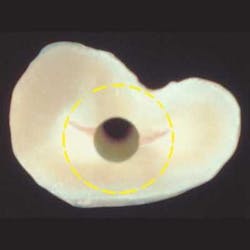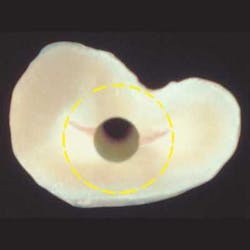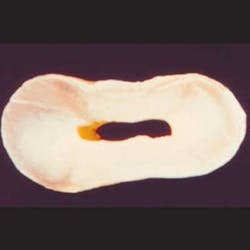Techniques for Today's Dentistry: Don't stress with endo!
Like many other clinicians today, I practice with a conservative treatment philosophy in that I try to save as much of the natural tooth as possible. For example, I'm a fan of direct bonded resin restorations instead of more aggressive indirect placed restorations. For a majority of patients presenting for cosmetic treatment, orthodontics may be the ultimate conservative treatment option. It is one of the healthiest means to obtain a beautiful smile, compared to veneers or crowns where tooth structure must be removed.
null
If a patient has decay encroaching on the pulp, I reassure him that I will avoid root canal therapy (RCT), if there is any way possible without compromising the quality of the restoration. My patients are aware that I enjoy performing root canal therapy about as much as they want to have it done. I've experienced years of success with direct pulp capping, as long as the tooth is not hyperemic and teeth with preparations in close proximity to the pulp remain healthy. However, with all the preventive measures I know to avoid having to perform RCT, there are still patients on whom no other treatment will do.
null
Any practice-management expert will tell you that referring your endodontic patients to a specialist is like throwing money out the window. In an attempt to make treating my own endo patients easier and less stressful, I have tried many different endodontic systems. Eventually, I came back to hand filing because there was less risk of perforation, file breakage, and discomfort to the patient, and more conservative results.
Three years ago, one of my associates insisted that I try another system, the design of which made sense. Instead of a rotary motion handpiece, which tends to "create" a canal that looks like the file, this handpiece has a 30-degree oscillating motion that works with the existing shape of the canal (Figures 1 and 2). This goes right along with my conservative treatment philosophy. It's satisfying to know that if I start out with a ribbon-shaped canal, I'll end up with a ribbon-shaped canal.
I have found the disposable patient kits to be less expensive (based on canal length), containing only seven files in each. These kits are much more time effective than picking through the old box-o'-files. The icing on the cake with the system I use (AET, Ultradent Products) is its syringe-delivered hydrophilic resin-based sealer that requires only one gutta percha point per canal to finish the RCT.
There are several good endodontic systems available, and this method for performing root canals has certainly made my life easier. If you have had difficulty in the past, try one of the new systems and see if it makes life easier!
Jaimee Morgan, DDS Dr. Morgan practices orthodontics, family, and cosmetic dentistry in Salt Lake City, Utah. She has presented numerous scientific papers, is a published author, and lectures internationally on aesthetic dentistry. Contact her at (801) 569-2600 or jaimee [email protected].


